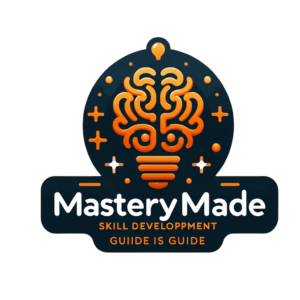Welcome to the gateway of empowerment, where our collective journey toward professional fulfillment unfolds. In today’s fast-paced world, equipping ourselves with effective career development tips and professional success tips is not just advantageous, it’s necessary. We, as a community of aspiring professionals, understand that the pursuit of excellence is a blend of personal growth strategies and continuous self-improvement methods. Together, let’s embark on a transformative voyage that promises to enhance our skill sets, broaden our perspectives, and ascend us to new heights of career achievements.
Key Takeaways
- Implement personalized career development tips to tailor your professional path.
- Utilize professional success tips to create impact and drive results in your industry.
- Engage in personal growth strategies for a rounded and robust career progression.
- Adopt self-improvement methods to stay relevant and competitive in an evolving workplace.
- Recognize the importance of setting achievable career milestones for long-term success.
Identifying Your Career Objectives
As we journey through our career paths, the clarity of our destination is paramount. Recognizing this, we must engage in a practice that not only involves self-recognition but also a keen understanding of the trajectory we wish to follow. To frame our pursuits precisely and to guide our steps with intention, we dive into the nuances of career progression methods, meld them with effective professional growth strategies, and employ various personal development techniques.
To illuminate the process, we begin with a rigorous self-assessment – a foundational step towards uncovering our core competencies and defining the career objectives that resonate most emphatically with us. This practice empowers us to chart a course that’s both ambitious and achievable, ensuring that every effort put forth is a stride towards our envisioned professional summit.
Setting clear objectives is akin to plotting a course on a map; it provides direction and helps measure the distance covered, ensuring we remain on the path to success.
With these profound objectives in mind, let’s consider a practical approach by utilizing a methodical table that categorizes and outlines the key aspects we must focus on:
| Objective Type | Description | Action Steps |
|---|---|---|
| Short-Term Goals | Milestones achievable within the coming year | Set monthly targets, enroll in skill-specific workshops, seek feedback from mentors |
| Mid-Term Goals | Ambitions for the next 3-5 years | Assess potential career advancements, strengthen professional network, complete certifications |
| Long-Term Goals | Vision for your career over the next decade | Identify industry trends, participate in leadership development programs, plan educational advancements |
Compiling these objectives into a structured format aids in visualizing our pathway and sets the tone for a proactive approach to career planning. Next, it’s imperative to devise strategies tailored specifically to these objectives by integrating them into our daily routines and decision-making processes.
As we endeavor towards our career aspirations, let us not forget that the mastery of personal development revolves around perpetual learning, adaptability, and the unwavering pursuit of our goals. Our proactive efforts in shaping our professional journeys will not only accelerate our growth but also pave the way for potential opportunities that lie ahead.
- Reflect on your passions and interests – they often lead to meaningful objectives.
- Utilize tools and resources – such as career assessments or professional workshops, to gain insights about your strengths and areas for growth.
- Set measurable milestones – that allow you to track progress and maintain motivation.
In conclusion, the critical task of identifying our career objectives is not a mere checkpoint in our professional journey; it is an ongoing evaluation that shapes the continuum of our growth – both personally and professionally. Through this evaluative prism, we cultivate a career path bursting with potential, driven by deliberate and personalized strategies.
Professional Growth Strategies to Elevate Your Skill Set
In an ever-evolving professional landscape, we recognize the significance of adopting robust strategies for professional skill enhancement. A dynamic skill set is the currency of the modern workforce, and fortifying it requires a multifaceted approach, integrating personal growth strategies, career development tips, and professional advancement strategies. Let us explore essential tactics that could profoundly impact our career trajectories.

Investing in Continuous Learning and Education
To remain indispensable in our respective fields, we prioritize learning as a continuous journey, rather than a final destination. We engage in upskilling through various platforms such as online courses, workshops, and seminars. This conscious move towards continuous education ensures that our knowledge bank stays rich and relevant to the demands of the market.
Seeking Out Mentoring and Coaching Opportunities
Access to seasoned professionals who can offer mentoring and coaching is an unrivaled tool in our personal and professional development arsenal. Through their insight and experience, we gain not only knowledge but also the wisdom to navigate our careers with strategic finesse.
Embracing Networking and Industry Engagement
Networking goes beyond the exchange of business cards. It’s about creating relationships that bolster our professional circle and uncover opportunities that may not be visible on the surface. Industry engagements through conferences and professional associations offer us a platform to share our expertise and learn from our peers.
| Strategy | Benefits | Action Items |
|---|---|---|
| Continuous Learning | Staying current with industry trends and technologies | Enroll in specialized courses, attend webinars |
| Mentoring | Personalized advice and guidance | Seek a mentor in your field, offer to mentor others |
| Networking | Expanded professional connections and opportunities | Join professional organizations, attend industry events |
Personal Development Techniques to Enhance Your Professional Image

When we speak of professional success, much of it hinges on the cultivation of an authentic professional image. This is more than dressing smartly or having a firm handshake, it’s the deliberate crafting of our personal brand that speaks volumes before we even enter the room. We, as proactive individuals committed to self-improvement, aim to align our personal development techniques with our career ambitions.”
Let’s delve into the transformative self-improvement methods that directly tie into our professional image:
- Communication Mastery: Articulate your thoughts clearly and confidently, both in writing and in speech. This core competency sets the stage for lasting impressions and meaningful connections.
- Emotional Intelligence: Develop your awareness of emotions—yours and others’—to navigate workplace dynamics with grace and professionalism.
- Digital Footprint: Our online presence can be an extensive portfolio of our accomplishments. Ensure it’s polished, professional, and mirrors our real-world ethos.
When applied earnestly, these strategies not necessarily redefine one’s image, but also install the wherewithal for surrounding personal growth. In essence, they become the personification of professional success tips, guiding us like a compass in pursuit of career excellence.
| Area of Development | Techniques for Improvement | Expected Outcome |
|---|---|---|
| Networking Skills | Attend industry events, build relationships on LinkedIn | Broadened professional circle, increased opportunities |
| Problem-Solving Abilities | Engage in brain-stimulating activities, seek diverse perspectives | Enhanced decision-making, innovative solutions |
| Leadership Qualities | Take initiative in group projects, study leadership models | Elevated influence, respect from peers |
“In a world that’s changing really quickly, the only strategy that is guaranteed to fail is not taking risks.” – Mark Zuckerberg
As we continue to implement these self-improvement methods, our professional image transforms into a dynamic emblem not only seen but felt by others—a beacon that signals our capacity for leadership, our readiness to innovate, and our unwavering commitment to excellence. This trinity of personal development, professional image, and success becomes inseparable as we journey through our career.
Strategies for Navigating Career Transitions Successfully
Facing career transitions can be overwhelming, but it’s also a chance for substantial professional development. We’re here to explore the necessary steps to make these transitions as smooth as possible, ensuring we can thrive in new environments with renewed vigor.
Crafting a Career Pivot Plan
Career pivot plans are critical as they provide us with clarity and direction during times of change. A comprehensive career pivot plan takes into account our long-term career goals and the steps needed to achieve them, which might involve retraining or upskilling.
Cultivating a Resilient Mindset
Adaptability is the name of the game when it comes to successful career transitions. Developing a resilient mindset allows us to stay positive, see the opportunities in every challenge, and remain flexible in our approach to new professional landscapes.
Leveraging Your Transferable Skills
Identifying our transferable skills is monumental during career changes. They are the competencies that can easily be applied to new roles, making us valuable assets in diverse job settings. Here’s a practical breakdown of common transferable skills:
| Transferable Skill | Benefits | Application Example |
|---|---|---|
| Communication | Facilitates clear understanding across multiple departments | Presenting project ideas efficiently |
| Leadership | Enables you to take charge of new teams and projects | Steering a team through a transition phase |
| Problem-Solving | Helps to navigate and resolve issues in unfamiliar contexts | Developing creative solutions for unexpected challenges |
| Technical Aptitude | Allows for quicker adaptation to new technologies and systems | Learning new platforms or software quickly |
Conclusion
In summarizing the wealth of insights shared, we can affirm that the path to professional fulfillment is built upon robust career growth tactics and professional success tips. Throughout this discourse, we’ve delved into a myriad of personal development techniques and professional advancement strategies, each serving as integral components in sculpting a career journey that is not only progressive but also rewarding. These strategies seamlessly intertwine to provide us with a comprehensive map, one that guides us to the pinnacle of our career aspirations.
As we reflect on the chapters of this guide, understanding that the infusion of these strategies into our professional lives demands unwavering dedication cannot be overstated. It’s about more than just climbing the career ladder; it involves a thoughtful application of learning, mentoring, networking, and skill enhancement with the goal of not just succeeding—but thriving—in our chosen endeavors. Implementing the approaches we’ve discussed is a testament to our resolve to not only meet but exceed our career benchmarks.
The pursuit of such an ambitious course is foundational to acquiring lasting career satisfaction, manifesting professional advancement, and celebrating personal achievements. While the journey might necessitate patience and perseverance, we know that the fruits of our labor will reflect the magnitude of our investment in these practices. Let us step forth, armed with knowledge and fortified by strategy, ready to transform every opportunity into a stepping stone towards our ultimate professional legacy.
FAQ
What are some effective professional growth strategies to advance my career?
Some key strategies include setting clear career goals, engaging in continuous learning, seeking mentorship and coaching, networking within your industry, and focusing on personal branding. These methods serve as a foundation for personal and professional development and can help to pave the way for advancements in your career.
How can I identify my career objectives?
Begin with a thorough self-assessment to reflect on your professional aspirations, strengths, and areas for improvement. Setting SMART (Specific, Measurable, Achievable, Relevant, Time-bound) goals can help clarify your objectives. Additionally, seeking feedback from peers or mentors can provide external insights into your career path.
Why is continuous learning important for professional skill enhancement?
Continuous learning keeps you updated with the latest trends, knowledge, and skills in your industry. It helps maintain your relevance in a rapidly evolving job market and positions you as a lifelong learner, which is an attractive trait to employers and valuable for personal growth strategies.
What personal development techniques can enhance my professional image?
To enhance your professional image, you could work on improving your communication skills, building a professional network, creating a strong online presence, and developing a personal brand that reflects your values, skills, and expertise. These techniques can make you more visible and respected in your professional circle.
What should I include in a career pivot plan?
Your career pivot plan should include a self-assessment of your passions and skills, identification of the new industry or role you are aiming for, the necessary steps to bridge any skill gaps, and a timeline for your transition. It’s also crucial to network and seek opportunities in the new field while preparing financially for the transition.
How can I cultivate a resilient mindset during career transitions?
Cultivating a resilient mindset involves embracing change, being open to new opportunities, learning from setbacks, and maintaining a positive outlook. It’s important to practice adaptability, seek support from your network, and develop coping strategies to handle the stress associated with change.
Why are transferable skills important during a career transition?
Transferable skills, such as leadership, communication, and problem-solving abilities, are valuable in any role or industry. They allow you to adapt more easily to new positions and demonstrate your versatility to potential employers, thus easing the transition and supporting your professional growth.











